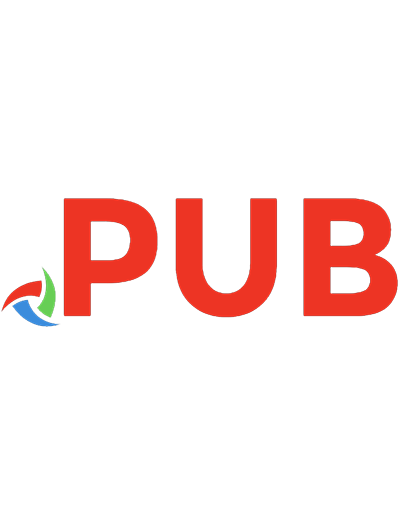Understanding and Improving Information Search: A Cognitive Approach 3030388247, 9783030388249
This edited book adopts a cognitive perspective to provide breadth and depth to state-of-the-art research related to und
502 124 6MB
English Pages 296 [286] Year 2020
Table of contents :
Contents
Contributors
1 Introduction
1.1 The Goal of This Book
1.2 Applying a Cognitive Approach to Improve Information Search
1.3 About This Book
1.3.1 Part I Foundation and Background
1.3.2 Part II Methods and Tools
1.3.3 Part III Areas of Applications
1.4 Summary
References
Part I Foundation and Background
2 Challenges for a Computational Cognitive Psychology for the New Digital Ecosystem
2.1 Introduction
2.2 Sensemaking
2.2.1 Cognitive Model of Geospatial Sensemaking and Cognitive Biases
2.3 Topic Learning and Knowledge-Tracing in Sensemaking Tasks
2.4 Credibility
2.5 Conclusion
References
3 How Cognitive Computational Models Can Improve Information Search
3.1 Introduction
3.2 The SNIF-ACT Model
3.2.1 Validation of the Model
3.2.2 Summary
3.3 The Explorative Search and Learning (ESL) Model
3.4 Validating the ESL Model—An Empirical Study
3.4.1 Procedure
3.5 Results
3.5.1 Summary
3.6 Conclusion and General Discussion
References
4 Cognitive Modeling of Age and Domain Knowledge Differences in Information Search
4.1 Introduction
4.2 Computational Cognitive Modeling Approach
4.3 Computational Cognitive Models
4.3.1 CoLiDeS
4.3.2 CoLiDeS+
4.4 Individual Differences
4.4.1 Age
4.4.2 Cognitive Modeling of Age-Related Differences in Information Search
4.4.3 Prior Domain Knowledge (PDK)
4.4.4 Cognitive Modeling of Domain Knowledge Differences in Information Search
4.4.5 Spatial Ability
4.4.6 Need for Cognition
4.5 Conclusions and Discussion
References
Part II Methods and Tools
5 An Evolving Perspective to Capture Individual Differences Related to Fluid and Crystallized Abilities in Information Searching with a Search Engine
5.1 Introduction
5.2 Current State of the Art on the Role of Fluid and Crystallized Abilities in Information Search Behavior and Performance
5.2.1 Review of the Theoretical Construct of IS
5.2.2 Review of the Theoretical Construct of Fluid and Crystallized Abilities
5.2.3 Overview of the Relation Between Fluid and Crystallized Abilities and IS Behavior and Performance
5.3 The Value of Studying Behavioral Data: A Review of Methodological Perspectives to Better Understand the Role of Fluid and Crystallized Abilities
5.3.1 Distinguishing Exploration Vs. Exploitation
5.3.2 Presentation of the Construct of Exploration and Exploitation Behavior
5.3.3 Impact of Fluid Abilities on Exploration and Exploitation Behavior
5.3.4 Impact of Crystallized Abilities on Exploration and Exploitation Behavior
5.4 Contextualizing
5.4.1 Contextualizing Online Behavioral Data in Relation to the Evolution of the Search Behavior
5.4.2 Contextualizing Online Behavioral Data in Relation to the Search Task
5.5 Discussion
5.5.1 Theoretical Perspectives to Include Fluid and Crystallized Abilities to Theoretical Models
5.5.2 Challenges and Perspectives for Future Works
References
6 Semantic Relevance Feedback on Queries and Search Results for Younger and Older Adults
6.1 Introduction
6.2 Related Work on Semantics of Query Reformulations
6.3 Two Studies on Semantic Relevance Feedback
6.3.1 Study 1: Younger Adults
6.3.2 Study 2: Older Adults
6.4 Conclusions and Discussion
Appendix 1 List of the (12) Tasks Used (Originally in Dutch)
References
7 Designing Multistage Search Systems to Support the Information Seeking Process
7.1 Introduction
7.2 Background
7.2.1 Conceptualizations of Tasks
7.2.2 Information Behavior, Seeking and Searching
7.2.3 Search User Interfaces
7.2.4 Search Interface Features for Different Information Seeking Stages
7.2.5 Summary
7.3 Toward a Framework for Complex Task Support
7.3.1 First Dimension: Input and Control Features
7.3.2 Second Dimension: Informational Features
7.3.3 Third Dimension: Personalizable Features
7.3.4 Concrete Example: SearchAssist
7.3.5 Summary
7.4 Systems Integrating Complex Task Support
7.4.1 Exploratory Search Systems and Features
7.4.2 Sensemaking Systems and Features
7.4.3 Summary
7.5 Connecting Search and Navigation
7.5.1 Navigation Support and Informational Features
7.5.2 Navigation and Input and Control Features
7.5.3 Navigation and Personalizable Features
7.5.4 Summary
7.6 Discussion and Conclusions
References
8 Search Support Tools
8.1 Introduction
8.2 Relevance Judgment
8.3 Information Credibility
8.4 Exploratory Search
8.5 Search Skill
8.6 Toward Combating Biases
8.7 Conclusions
References
9 Eye-Tracking as a Method for Enhancing Research on Information Search
9.1 Introduction
9.2 Eye-Tracking
9.2.1 Types of Eye-Trackers
9.2.2 A Typical Eye-Tracking Procedure
9.2.3 Using Eye-Tracking Data to Model Reading
9.3 Contributions Made by Eye-Tracking to IS Research
9.3.1 Domain Knowledge
9.3.2 Search as Learning
9.3.3 Cognitive Load
9.3.4 Cognitive Abilities—Working Memory
9.3.5 Relevance Judgements
9.4 Conclusions and Outlook
References
Part III Areas of Applications
10 Children’s Acquisition of Text Search Strategies: The Role of Task Models and Relevance Processes
10.1 Information Search as a Complex Skill
10.1.1 A Brief Review of Information Search Models
10.1.2 Three Specific Cognitive Demands of Information Search
10.2 Children’s Challenges with Information Search: Task Model Construction, Selective Access, and Relevance Assessment
10.2.1 Challenges in Understanding and Remembering the Search Task
10.2.2 Challenges in Selectively Accessing Content Information
10.2.3 Challenges in Assessing the Relevance and Quality of Information
10.3 Fostering Readers’ Search Skills
10.3.1 Interventions Using Pre-Search Activities to Enhance Readers’ Task Models
10.3.2 Interventions Focused on Selecting and Evaluating Document Information
10.3.3 Interventions Combining Several Stages of the Information Search Processes
10.3.4 Summary and Perspectives for Future Intervention Studies
10.4 Conclusions
References
11 Trainings and Tools to Foster Source Credibility Evaluation During Web Search
11.1 Introduction
11.2 Overview on Interventions and Support Tools for Source Credibility Evaluation
11.2.1 Comprehensive Training Programs Addressing the Whole IPS-I Process
11.2.2 Short-Term Trainings on Source Credibility Evaluation
11.2.3 Computer-Based Applications and Search Results Interfaces Using Prompts or Cues
11.3 Discussion
References
12 Computer-Supported Collaborative Information Search for Geopolitical Forecasting
12.1 Introduction
12.2 Background
12.2.1 Cognitive Biases in Information Search and Decision-Making
12.2.2 Traits and Behaviors Predicting Forecasting Performance
12.2.3 Information Search and Sense-Making Tools
12.2.4 Hybrid Human–Machine Tools Supporting Forecasting
12.3 Method
12.3.1 Participants
12.3.2 Performance Measures
12.3.3 Hybrid Features
12.3.4 Variables Related to Personality and Behavior
12.3.5 Hypotheses
12.4 Results
12.4.1 Psychometric Variables
12.4.2 Use of Hybrid Features and Forecasting Productivity and Accuracy
12.4.3 Structural Equation Modeling (SEM)
12.5 Discussion and Conclusion
References
13 Conversational Interfaces for Information Search
13.1 Introduction
13.2 Conversational Search
13.2.1 From Search to Conversational Search
13.2.2 Toward Conversational User Experience
13.3 Recipient Design with a Conversational Search System
13.3.1 Conversational Behaviors with a QA Agent
13.3.2 Recipient Design by Tailoring Search Functionalities
13.3.3 Recipient Design by Tailoring Interaction Styles
13.4 Summary
References

![Understanding and Improving Information Search: A Cognitive Approach [1st ed.]
9783030388249, 9783030388256](https://dokumen.pub/img/200x200/understanding-and-improving-information-search-a-cognitive-approach-1st-ed-9783030388249-9783030388256.jpg)






